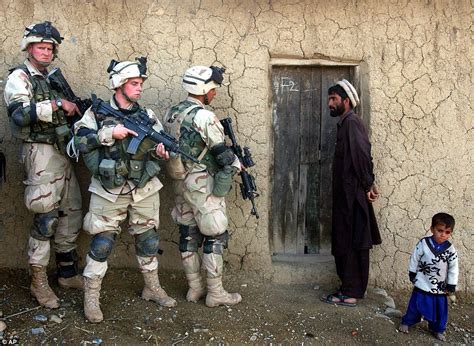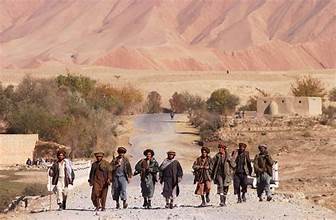Historical Background: Afghanistan Before 2001
To fully understand the U.S. involvement in Afghanistan, one must first grasp the nation’s historical backdrop. Afghanistan has long been known as the “graveyard of empires.” Its strategic location, rugged terrain, and tribal society have made it difficult for foreign powers to exert lasting control.
The Soviet Union invaded Afghanistan in 1979 to support a faltering communist government, triggering a decade-long resistance by the Afghan mujahideen. With significant support from the United States, Saudi Arabia, and Pakistan, these fighters forced a Soviet withdrawal in 1989. This Cold War proxy battle left Afghanistan politically fragmented and socially devastated. After the Soviets left, civil war ensued, and by 1996, the Taliban — a hardline Islamist group — had seized control of most of the country.
The Rise of the Taliban and Al-Qaeda
The Taliban regime, known for its strict interpretation of Sharia law, gained notoriety for its repression of women, destruction of cultural artifacts like the Bamiyan Buddhas, and harsh punishments. But more critically for the U.S., the Taliban provided sanctuary to Osama bin Laden and his terrorist network, al-Qaeda.
Bin Laden used Afghan soil to plan and orchestrate terrorist attacks, including the 1998 bombings of U.S. embassies in Kenya and Tanzania and the 2000 bombing of the USS Cole. Despite U.S. demands to hand over bin Laden, the Taliban refused.
The Catalyst: 9/11 Attacks and the U.S. Invasion
On September 11, 2001, al-Qaeda operatives hijacked four commercial airplanes, crashing two into the World Trade Center towers in New York City, one into the Pentagon, and one into a Pennsylvania field. Nearly 3,000 people were killed. The attacks shocked the world and led President George W. Bush to declare a global “War on Terror.”

Just weeks later, on October 7, 2001, the United States, with support from NATO and allied nations, launched Operation Enduring Freedom. The goal was twofold: dismantle al-Qaeda and remove the Taliban from power.
Phase One (2001-2003): Toppling the Taliban
The initial phase of the war was swift. U.S. Special Forces, working with the CIA and the Northern Alliance (an Afghan opposition group), routed the Taliban from major cities within weeks. By December 2001, Kabul had fallen, and the Taliban regime had collapsed.
In its place, a new Afghan government was formed under Hamid Karzai, who later became the first democratically elected president. A United Nations-brokered process aimed to establish democratic institutions, rebuild infrastructure, and ensure security.
Phase Two (2004-2010): Insurgency and Nation-Building
Despite early successes, the Taliban was not defeated. Instead, its fighters melted into rural areas and across the Pakistani border. By 2004, the Taliban had regrouped, and an insurgency began to take shape. Ambushes, improvised explosive devices (IEDs), and suicide bombings became common tactics.
Meanwhile, the U.S. and NATO forces found themselves entangled in nation-building. Billions were spent on schools, hospitals, roads, and training Afghan security forces. However, progress was slow and often marred by corruption, inefficiency, and a lack of cultural understanding.

At the same time, Afghanistan held several democratic elections, including the landmark 2004 presidential vote. Yet, violence and Taliban influence continued to grow, especially in southern and eastern provinces.
Pakistan’s Role: A Double Game
A critical aspect of the Afghan war was the role of neighboring Pakistan. While officially a U.S. ally in the War on Terror, Pakistan’s intelligence services (ISI) were accused of providing sanctuary to Taliban leaders, notably in the Quetta Shura and the Haqqani network.
This duplicity hindered U.S. efforts and led to a complicated relationship with Islamabad. Pakistan’s strategic interest in having a pro-Pakistan government in Kabul, countering Indian influence, often clashed with American goals.
Obama’s Surge (2009-2011): A Temporary Boost
In 2009, President Barack Obama inherited a deteriorating situation. The Taliban was gaining ground, and the Afghan government struggled to maintain control. In response, Obama authorized a “surge” of 30,000 additional U.S. troops, bringing the total to over 100,000.
The goal was to reverse Taliban gains and create breathing space for Afghan institutions to grow. Key operations took place in Helmand and Kandahar provinces, and notorious Taliban leaders were targeted.
In May 2011, U.S. Navy SEALs killed Osama bin Laden in Abbottabad, Pakistan. His death was a major symbolic victory, but the Taliban insurgency showed no signs of abating.

Phase Three (2011-2014): Transition and Drawdown
Following the bin Laden raid, the U.S. began preparing to reduce its military presence. NATO formally transferred security responsibilities to Afghan forces in 2011. By the end of 2014, most NATO combat troops had left Afghanistan, though a smaller contingent remained for training and counterterrorism.
The Afghan National Army (ANA), despite billions in funding and years of training, struggled with logistics, morale, and desertions. Corruption remained rampant, and warlordism persisted in many regions.
Phase Four (2015-2021): Stalemate and Withdrawal
From 2015 onward, the war entered a phase of strategic stalemate. The Taliban continued to control or contest large swathes of territory, while U.S. and NATO forces provided air support, intelligence, and training.
President Donald Trump, like his predecessors, grappled with the war. In 2020, his administration signed the Doha Agreement with the Taliban. It promised a full U.S. withdrawal by May 2021 in exchange for Taliban promises to prevent terrorism and engage in intra-Afghan dialogue.
The Fall of Kabul (2021): A Shocking Collapse
President Joe Biden, following the Doha Agreement, announced a final U.S. withdrawal by September 2021. However, as American troops left, the Taliban launched a rapid offensive. Provincial capitals fell one by one, often without resistance.
On August 15, 2021, Kabul fell, and President Ashraf Ghani fled the country. The world watched in disbelief as the Taliban reclaimed power almost exactly 20 years after being overthrown. The chaotic scenes at Kabul Airport, including people clinging to aircraft, symbolized the abrupt and tragic end of America’s longest war.

The Human Cost of the War
The war in Afghanistan exacted a heavy toll:
- U.S. casualties: Over 2,400 American service members died, and more than 20,000 were wounded.
- Afghan civilians: Estimates suggest over 47,000 civilians were killed.
- Afghan forces: Approximately 66,000 Afghan soldiers and police lost their lives.
- Taliban and insurgents: Over 50,000 were killed.
- Financial cost: The U.S. spent more than $2 trillion on the war.
Beyond numbers, the psychological toll on veterans, the displacement of millions of Afghans, and the long-term trauma are incalculable.
Major Players and Groups
- United States: The primary force behind the military and reconstruction efforts.
- NATO and ISAF: International allies including the UK, Canada, Germany, and others.
- Taliban: Islamist insurgents seeking to restore their version of Islamic rule.
- Al-Qaeda: The original target of the war; its influence waned over time.
- ISIS-K: An offshoot of ISIS that emerged in eastern Afghanistan in 2015.
- Afghan Government: Elected but weakened by corruption and dependency.
- Pakistan: A complex partner with links to insurgent groups.
- Warlords and Militia: Local power brokers with shifting allegiances.
Strategic and Political Failures
Many factors contributed to the war’s failures:
- Overambitious goals: Initial counterterrorism turned into nation-building.
- Corruption: Massive aid mismanagement weakened Afghan institutions.
- Underestimating the Taliban: Their resilience and adaptability were not properly understood.
- Poor understanding of Afghan society: Tribal dynamics, rural loyalties, and Islamic culture were often misinterpreted.
- Inconsistent strategy: Changing U.S. administrations led to shifting objectives.
- Safe havens in Pakistan: Allowed the Taliban to regroup and sustain operations.
Legacy and Lessons Learned
The war in Afghanistan offers sobering lessons:
- Military power has limits: Especially in asymmetric warfare.
- Nation-building is complex: Imposing Western models in fractured societies rarely works.
- Local legitimacy matters: Without grassroots support, governments falter.
- Exit strategies are essential: Entering a war is easy; ending it is not.
- Terrorism adapts: While bin Laden was killed, terrorism persists in new forms.
The Taliban’s Return and Future Outlook
Since their return, the Taliban have promised moderation, but reports of repression, especially of women and minorities, have reemerged. Afghanistan now faces a humanitarian crisis, with economic collapse, drought, and isolation looming.
The international community is in a dilemma: how to engage with the Taliban without legitimizing their rule or compromising human rights.
Conclusion.
The U.S. war in Afghanistan was a defining chapter in 21st-century geopolitics. It started with righteous fury and a desire to prevent future terror attacks but evolved into a quagmire of insurgency, political dysfunction, and tragic loss. Though bin Laden was brought to justice, the ultimate goals of peace, stability, and democracy in Afghanistan proved elusive.
As history judges this war, it will remember the bravery of soldiers, the resilience of Afghan people, and the cautionary tale it offers to future leaders about the costs and consequences of prolonged military intervention.
Q&A on the U.S. War in Afghanistan
Q1: What triggered the U.S. invasion of Afghanistan in 2001?
A1: The U.S. invaded Afghanistan on October 7, 2001, in direct response to the September 11 terrorist attacks. The goal was to dismantle al-Qaeda and remove the Taliban regime that was providing safe haven to Osama bin Laden
Q2: How long did the U.S. war in Afghanistan last?
A2: The war lasted nearly 20 years, from October 2001 to August 2021, making it the longest war in U.S. history.
Q3: Who were the main enemies the U.S. fought against in Afghanistan?
A3: The U.S. primarily fought the Taliban, but also engaged with al-Qaeda, and later with ISIS-K, an extremist group that emerged in eastern Afghanistan around 2015.
Q4: What was the role of Pakistan in the Afghanistan war?
A4: Pakistan was a key U.S. ally but was also accused of playing a “double game” by supporting the Taliban through its intelligence agency, ISI, while officially cooperating with U.S. counterterrorism efforts.
Q5: What was Operation Enduring Freedom?
A5: Operation Enduring Freedom was the official name of the U.S.-led military operation that began the invasion of Afghanistan in 2001. It aimed to destroy terrorist networks and remove the Taliban from power.
Q6: Who was Hamid Karzai and what was his role?
A6: Hamid Karzai was the first post-Taliban president of Afghanistan, serving from 2001 to 2014. He played a key role in rebuilding the Afghan government with U.S. and NATO support.
Q7: What was the U.S. strategy during President Obama’s term?
A7: President Obama launched a troop surge in 2009, sending an additional 30,000 troops to combat the Taliban insurgency, especially in southern Afghanistan. He later initiated a drawdown strategy to transfer security responsibilities to Afghan forces.
Q8: What was the Doha Agreement?
A8: Signed in February 2020 between the U.S. and the Taliban, the Doha Agreement outlined the withdrawal of all U.S. troops in exchange for Taliban promises to prevent terrorism and engage in peace talks with the Afghan government.
Q9: Why did the Afghan government collapse so quickly in 2021?
A9: The Afghan government fell due to a combination of corruption, low morale in Afghan forces, lack of public support, and the rapid Taliban offensive. Many Afghan soldiers surrendered or fled without resistance.
Q10: What happened during the fall of Kabul?
A10: On August 15, 2021, the Taliban entered Kabul with minimal resistance. President Ashraf Ghani fled the country, and the Afghan government collapsed. Chaotic scenes unfolded at the airport as thousands tried to flee.
Q11: How many people died in the Afghanistan war?
A11: Over 2,400 U.S. troops, 66,000 Afghan security personnel, 47,000 civilians, and over 50,000 Taliban/insurgents were killed. The war also displaced millions.


I simply could not go away your web site prior to suggesting that I really enjoyed the standard info a person supply on your guests Is going to be back incessantly to investigate crosscheck new posts